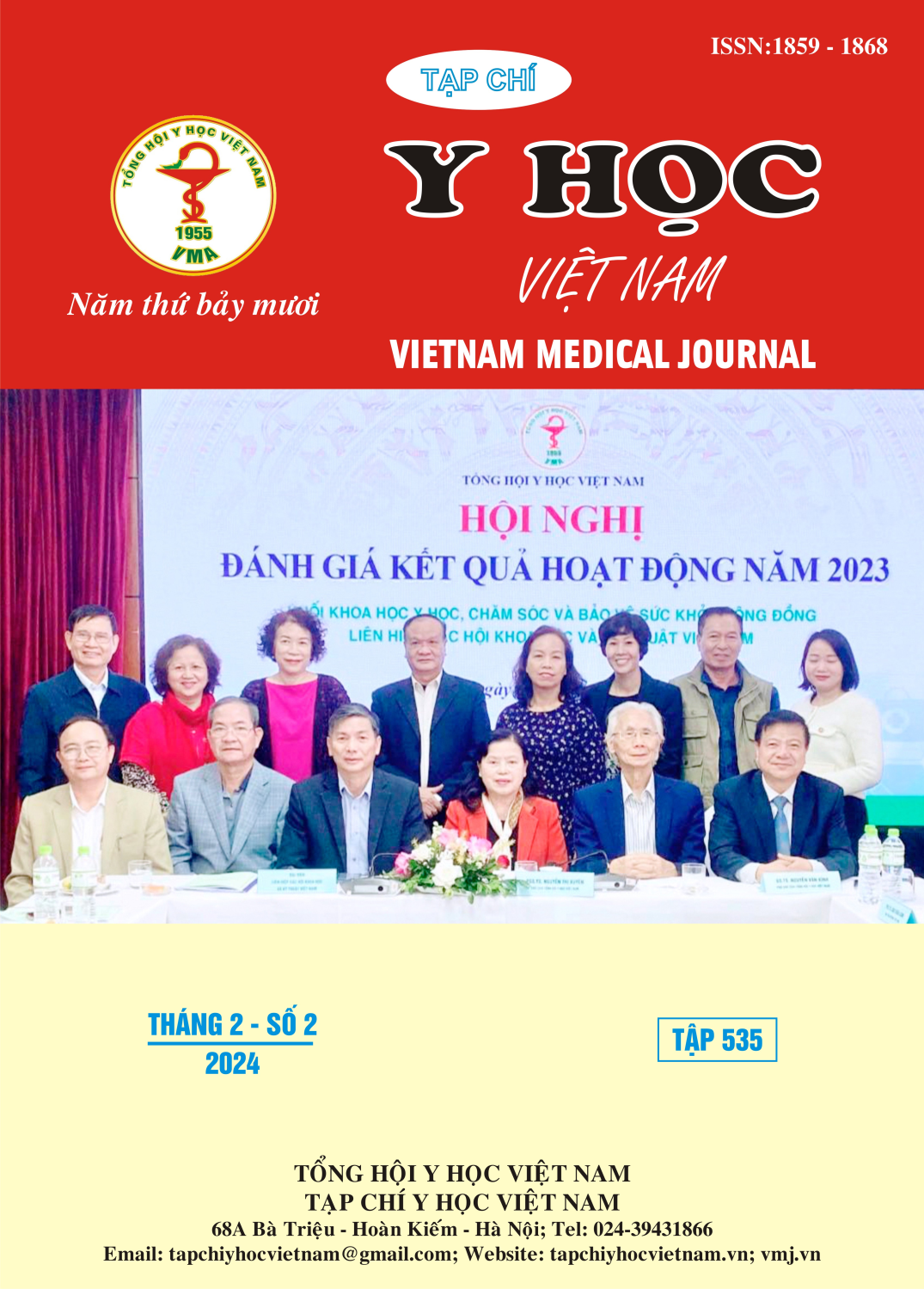CHARACTERISTICS OF PRESCRIPTION, LABORATORY AND HEMODYNAMIC PARAMETERS IN PATIENTS WITH HYPOVOLEMIC SHOCK MEASURED BY THORACIC IMPEDANCE METHOD
Main Article Content
Abstract
Objective: To describe the clinical characteristics, bedsde findings, and some hemodynamic parameters using the transthoracic impedance method in patients with hypovolemic shock. Methods: A prospective observational study was conducted on 30 patients diagnosed with hypovolemic shock according to the criteria of the Ministry of Health's Hypovolemic Shock. Hemodynamic parameters were measured using the transthoracic impedance technique upon admission and at various time points within the first 24 hours at the Emergency Center A9 of Bach Mai Hospital. The study was conducted from October 2022 to October 2023. Results: Among the 30 patients in the study, 77.1% were male, with an average age of 49.96 ± 13.92. 93.33% of the patients survived and were discharged from the hospital, while 33.33% of patients required artificial ventilation. The mean arterial pressure at different time points were as follows: T0 116.37 ± 23.32, post-fluid bolus 112.5 ± 18.05, T1 105.5 ± 19.7, T6 98.03 ± 18.21, T12 91.57 ± 13.52, T24 82.26 ± 11.77. The hemoglobin concentration at admission was 64.83 ± 31.07 and 78.86 ± 19.48 after 24 hours. Stroke volume variation (SVV) values at different time points were: T0 22.67 ± 19.56, post-fluid bolus 20.45 ± 17.63, T1 18.98 ± 13.04, T6 15.53 ± 10.06, T12 12.31 ± 10.92, T24 10.06 ± 9.17. Thoracic Fluid Content (TFC) values at different time points were: T0 19.87 ± 15.60, post-fluid bolus 20.54 ± 17.22, T1 22.78 ± 17.93, T6 29.61 ± 18.6, T12 30.88 ± 20.04, T24 32.12 ± 21.12. Conclusion: Hypovolemic shock predominantly affects males, primarily due to hemorrhagic shock, with low hemoglobin concentration upon admission. Hemodynamic parameters measured using the transthoracic impedance method are consistent with clinical progression, with statistically significant differences noted immediately after fluid bolus, and further significant differences observed at subsequent time points.
Article Details
Keywords
Hypovolemic shock, Chest resistance, Blood circulation, Predisposing factors
References
2. Akoury, T; Whetstone, DR (January 2021). "Splenic Rupture". PMID 30247826.
3. Hooper, Nicholas; Armstrong, TylerJ (2018-10-27)."Shock,Hemorrhagic". NCBI Bookshelf. PMID 29262047. Retrieved 2019-02-21.
4. Taghavi, S; Askari, R (2018), "article-28977", Hypovolemic Shock, Treasure Island (FL): StatPearls Publishing, PMID 30020669, retrieved2019-02-20.
5. Nguyễn Như Bình , Khảo sát một số thông số huyết động đo bằng phương pháp trở kháng thành ngực physioflow trong theo dõi huyết động 24h đầu ở bệnh nhân sốc nhiễm khuẩn, Luận văn thạc sỹ 2022, 46-47.
6. Hamed Mahmoud Mohamed, Sherif Mokhtar Randa, Aly Soliman Mohamed Mohamed Khaled, Non invasive adjustment of fluid status in critically ill patients on renal replacement therapy. Role of Electrical Cardiometry 2016The Egyptian Journal of Critical Care Medicine.


